Sound of Harris - Outer Hebrides - Scotland
BORERAY
- Wildlife
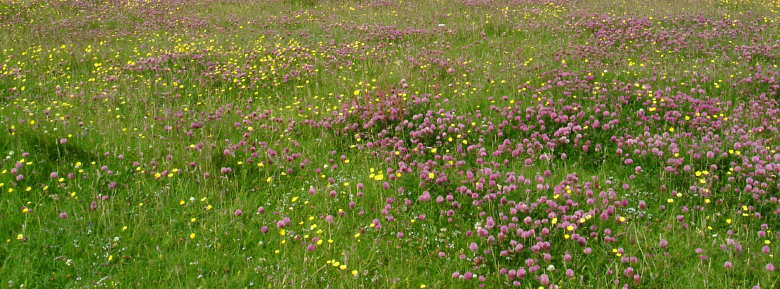
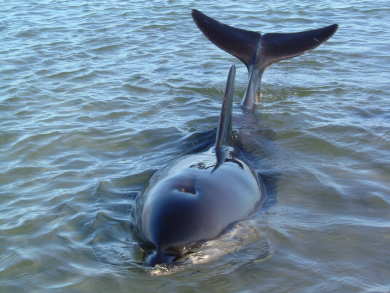
The Sound of Harris is a shallow stretch of water between Harris and North Uist, about ten miles west to east by six miles north to south; it is littered with sandbanks, reefs and uninhabited islands (Boreray and Berneray are the only populated ones). This navigator's nightmare is paradise for wildlife.
The bottle-nosed dolphin (above) virtually came ashore on Traigh na Luibe last year. The pilot whale (right) beached on the western side of Boreray in 2005, in almost the exact location where a 10m sperm whale landed in 1999.
Seals and otters are regularly to be seen on and around the shores.
However, it is the unusual and extensive range of birdlife that makes the island such a unique and special place,
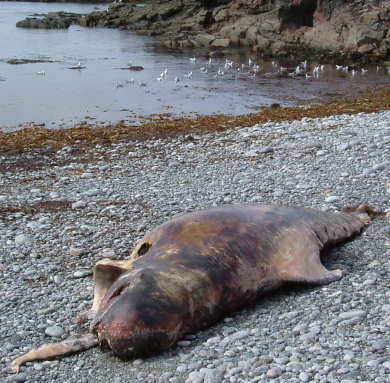
A wintering flock of 750 Greenland barnacle geese roost on the southern part of Boreray from October to April every year; in fact, the entire population (around 3,000) congregate here for a few days on arrival and departure. There are also pink-footed and greylag geese, the latter present all year and breeding (30+ pairs).
Several species of waders live or over-winter here, including purple sandpiper, turnstone, dunlin, ringed plover, oystercatcher and sanderling.
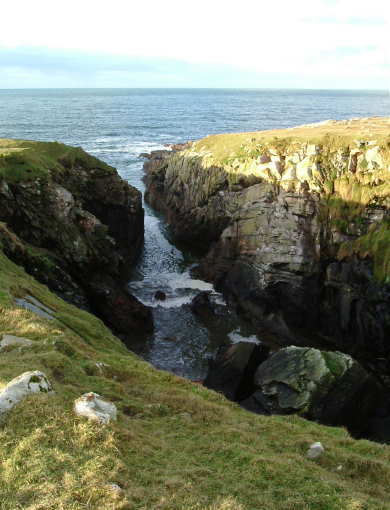
During the summer months, Boreray becomes one enormous incubator. It is impossible to walk anywhere without incessant birdcall.
One of the most dramatic features is Geiris Geo in the north-west; this is a long, narrow gorge with vertical sides. Shag, fulmar, rock dove, rock pipit and black guillemot nest on its ledges and in its crevices.
The north-east of Boreray is territory for gulls, and almost every large boulder in an area 100m square provides a nesting place.
Fulmar occupy most of the old house ruins, and even nest in hollows in the dunes. Their single chicks grow to a huge size before fledging.
The northern and southern shorelines have plover, oystercatcher and tern nests. A great flock of starlings live and breed in the ruined church, along with more rock doves. Eiders breed in the small bay next to the church.
Around the nearby croft buildings are more familiar species, such as blackbird, robin, wren and pied wagtail.
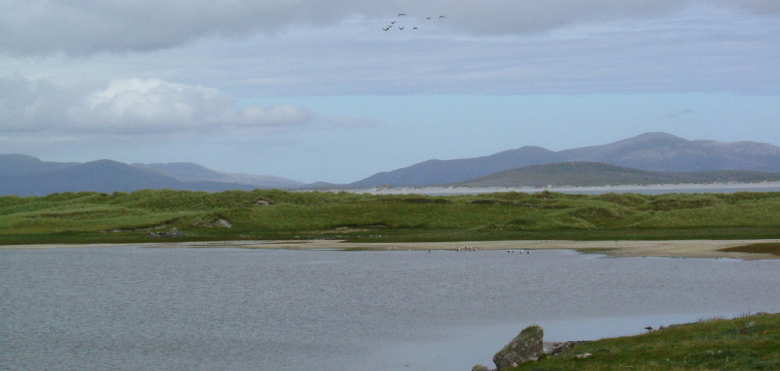
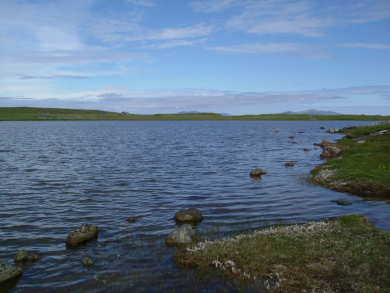
Away from the lochs, snipe and skylarks are commonplace. Eagles - both golden and white-tailed - often quarter the island.
Large numbers of gannets spend long summer days diving in the seas around Boreray.